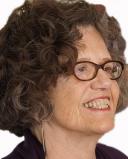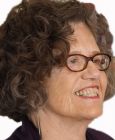Understanding Twins
The Film "Three Identical Strangers"
The impact of an unethical adoption study.
Posted September 11, 2018
(Spoiler alert: Many of the reviews, along with media and online discussions of this documentary film indicate that what starts out depicting a joyous reunion comes to have a darker side. Some of the reviews disclose one or both of the unexpected developments. Here I will reveal and discuss only one. If you plan to see the film soon in a theater or on a Netflix DVD, you may want to do so before reading this.)
Three Identical Strangers is a well-made documentary with excellent pacing and climatic developments. I recommend readers see it even though I have some criticisms of the content.
In 1980, two 19-year-old identical men who had been adopted separately as infants found each other when they were both students at Sullivan County Community College near New York City. A third triplet, a student at Queens College in New York, found the other two when he saw press reports of their meeting. Neither they nor their adoptive parents knew that they each had two identical brothers.
The reunion of the triplets became a media circus. The mass media stressed how much they had in common, despite not knowing of each other’s existence or having any previous contact. The three brothers also reveled in their sameness, even moving in together and jointly opening a restaurant in New York City. Their story helped create a cultural move away from an exclusive emphasis on family nurture as the determinant of adult outcomes and helped turn the culture toward a recognition of the importance of genetic inheritance.
Only gradually did the bromance fade as the triplets began to see their differences and to reflect on how they had all been damaged, but in distinct ways, by their separation. One of the brothers had more mental health problems than the others, which the filmmaker blames on inadequate fathering. While this is a welcome departure from the usual mother blaming, it is a simplistic and inadequate explanation. Studies of newborn twins have shown that intrauterine and postnatal environments lead to differences in gene expression and some of these divergent patterns are detectable at birth. The new field of epigenetics explores how environmental factors influence which genes are switched off and on. The film never mentions this science, but even without doing so, it could have examined how different family dynamics and the impact of distinct environments (neighborhoods, schools, peer groups, and any childhood trauma) affected adult outcomes.
The movie is better at revealing and probing the psychological study that began before the triplets were adopted from the prestigious Louise Wise Services in New York, which specialized in Jewish adoptions. Soon after they discovered one another, the triplets and their parents went with a lawyer to confront the agency about why they were not told about the existence of triplets. They felt they were stonewalled. Given what they found out later, they were.
In 1995, science journalist Lawrence Wright discovered and exposed in both a New Yorker article and his subsequent 1997 book, Twins, that a secret study existed involving a few sets of identical twins and this one set of triplets, all adopted from the Louise Wise agency. Wright discovered that the prominent psychiatrist, Peter Neubauer, the father of American child psychiatry, worked with the Louise Wise agency, starting in the 1960s, to launch his study of nature and nurture, based on separated identical twins. Wright shared this information with the triplets, which fueled their anger.
Their adoptive parents were told that a study was underway, and they were urged to cooperate in what was described to them as usual research on child development. There was no mention of studying twins or triplets. Knowing the prestige of the agency and how hard it was to adopt a Jewish child, the parents of the triplets independently agreed. Every two months for 12 years, the adoptive parents and children were given all kinds of tests and questionnaires, and the children were filmed. The three boys remember this experience.
Wright appears in the film and explains that no results were ever published from the study and that, before Neubauer died in 2007, he deposited the study materials in a Yale University archive with instructions that they not be opened until 2065. Neither Wright nor the filmmaker has any explanation for these actions. We can only speculate that the results were never published because Neubauer later realized that his unethical methods would be revealed or because he had not found what he wanted: He had not been able to clearly distinguish the impact of nature and nurture.
Because the film does not discuss other studies using twins to try to understand the impact of nature and nurture in individual development, the viewer may be left with the impression that all twin studies are illegitimate. This is not the case. The well-publicized Minnesota twin studies, which started in 1979, used only adult identical twins who volunteered to be studied. Later adult fraternal twins volunteered for the study so that their cognitive and psychological characteristics, along with other behaviors, could be compared with those of identical twins.
A large number of adopted infants (including a few twins) and their biological and adoptive families began to be studied in the 1970s with projects in psychology departments at the University of Colorado and University of Texas in cooperation with researchers at other universities. They formed a new field of behavioral genetics which distinguished itself from any history of eugenics. Mothers who gave up their child for adoption were asked to take some tests and then the new adoptive parents were given the same tests. Any of these parents could refuse to participate with no impact on the adoption. The adoptive families were compared with a matched control group of parents with only biological children. More important, these subjects were followed for 20 years and longer. As the adoptees became adults, they were informed of the study results and given periodic newsletters with updates about the findings. One subject herself grew up to become a behavioral geneticist.
There are controversies about the findings of behavioral genetics. For example: Can these studies using adoptees generate data applicable to all children? What can the quantitative behavioral correlations (without having any data on actual DNA or genes) tell us? But no one to my knowledge has called their studies unethical. Moreover, behavioral genetics is not determinist. The studies document the importance of the environment interacting with biological inheritance.
The difference between these adoption studies of the impact of nature and nurture and the secret one begun at the Louise Wise Agency is illustrated in a 2008 book, Identical Strangers: A Memoir of Twins Separated and Reunited, by twins Elyse Schein and Paula Bernstein. They were also adopted from Louise Wise in the 1960s, their adoptive parents were not told there was a twin, and they were initially part of the secret study. They are interviewed briefly in the film. Their book may have inspired the film, and is an interesting complement to it, for much of the narrative concerns their search for an understanding of the Louise Wise practices and study. They even interviewed Dr. Neubauer before his death and were able to ferret out a bit more about his intentions.
Schein and Bernstein also interviewed some of the scientists who worked on the Minnesota twin studies. They read and used some behavioral genetics studies on twins to better understand their experience. Implicitly, these twins recognize the legitimacy of ethical twin and adoption studies compared with the unethical study begun at Louise Wise.
I appreciate Three Identical Strangers for opening up this discussion to a larger audience.




